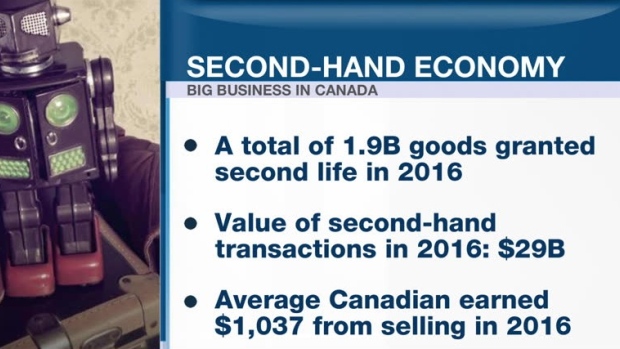Mar 14, 2017
Pattie Lovett-Reid: The second-hand market is a $29B business in Canada
In 2016, 82 per cent of Canadians participated in some form of second-hand transactions, (monetary and non-monetary), 73 per cent of them acquired at least one second-hand good and 69 per cent disposed of one or more second-hand goods.
The second-hand economy is big business .
When it comes to buying, selling, swapping and donating, Kijiji’s 3rd annual Second-Hand Economy Index shows that 1.9 billion goods were granted a second life in 2016 and that’s 30.4 million more goods exchanged hands than in 2015, with the value of all second-hand transactions in 2016 totaling $29B.
The most exchanged goods were clothing, shoes and accessories, followed by entertainment products, baby clothing and accessories, games and toys and rounding out the top five leisure, art and craft items. Sellers earned on average $1,037 in 2016 versus $883 in 2015 and Canadians saved on average, by acquiring used goods instead of new goods $843 in 2016 verses to $480 in 2015.
What are the profiles of second-hand buyers? The most active buyers tend to be artisans, according to the Index. These consumers primarily live in dense, industrial neighbourhoods scattered across medium-sized cities.

They tend to have an average household income $64,620 and enjoy woodworking, crafts and collecting coins and stamps. The Urban Edgies are consumers who enjoy a less affluent lifestyle, and live mostly in Quebec, and enjoy discovering the latest products online. They may have a lower family income on average $40,600, but have a zest for life and know how to take advantage of the second-hand purchase.
Interesting to note the report draws the correlation to a clear relationship between the strength of the economy and second-hand economy activity. The lower the unemployment rate, the higher the average wage, the higher the index or activity level. The second-hand economy increases as real wages increase.
Bottom line – Canadians’ second-hand practices represents a sizable part of the country’s overall economic activity.







